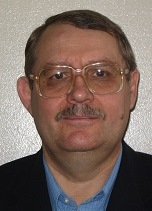Address:
South Ural State University
Office 04, Main University Building 1A
76, Prospect Lenina
Tel.: + 7 351 267 95 17
E-mail: rakitinoa[at]susu[dot]ru
 |
Head of the Project Oleg RakitinD.Sc., Professor
|
About
Organic photovoltaics is one of the promising research areas in the field of alternative energy. Organic solar cells are simple in design and non-toxic; they have a short payback period and require minimum substrate amount. South Ural State University is working on the molecular design of photosensitizers for third-generation organic solar cells. The University is developing a comprehensive method for solar energy conversion based on the new dyes designed with the use of chalcogen-nitrogen heterocycles. The new molecular architecture enables to increase the photostability, light absorption, and conversion rate. By broadening the variety of organic semiconductors, the University is paving the way to the future of energy engineering, electronics, and photovoltaics. The designed materials will find their use in non-fuel energy engineering and nonmetal electronics.
One of the considerable advantages of third-generation solar cells is their short payback period compared to the first- and second-generation solar cells. According to the data from Energy and Environmental Science, the payback period for third-generation solar cells takes months, whereas it takes years for solar panels of the previous generations to pay off.
However, the existing third-generation photovoltaic cells are energy-inefficient, with 12% conversion rate in lab tests. Such inefficiency is due to the low-level hole and electron conductivity and high recombination rate. South Ural State University is planning to develop third-generation solar cells to make them more energy- and cost-efficient by:
- implementing higher chalcogenides that will considerably narrow the band gap;
- enhancing electrical conductivity along the layers of molecular packing.
The project aims to achieve a breakthrough in alternative energy and improve the efficiency of solar cells, increasing the conversion rate to 15%, which is near to the theoretical limit.
Results
- Synthesis of metal-free organic sensitizers of the donor-acceptor-spacer-acceptor type based on 2,1,3-benzochalcogenadiazole fragments;
- Statistical analysis of photophysical and spectroscopic properties of third-generation photovoltaic sensitisers; new ways of increasing photovoltaic efficiency for benzothiadiazole-based DSSCs found;
- A short and efficient synthesis of 5,5' -bi-1,2,3-dithiazoles that could serve as the starting compounds for the synthesis of radical cations (potential building blocks for charge transfer conductors);
- Substitution of sulfur atoms with selenium atoms in 1,2,5-thiadiazoles and 1,2,3-dithiazoles shown.
Partners





.png)
.png)
.png)
.png)
.png)